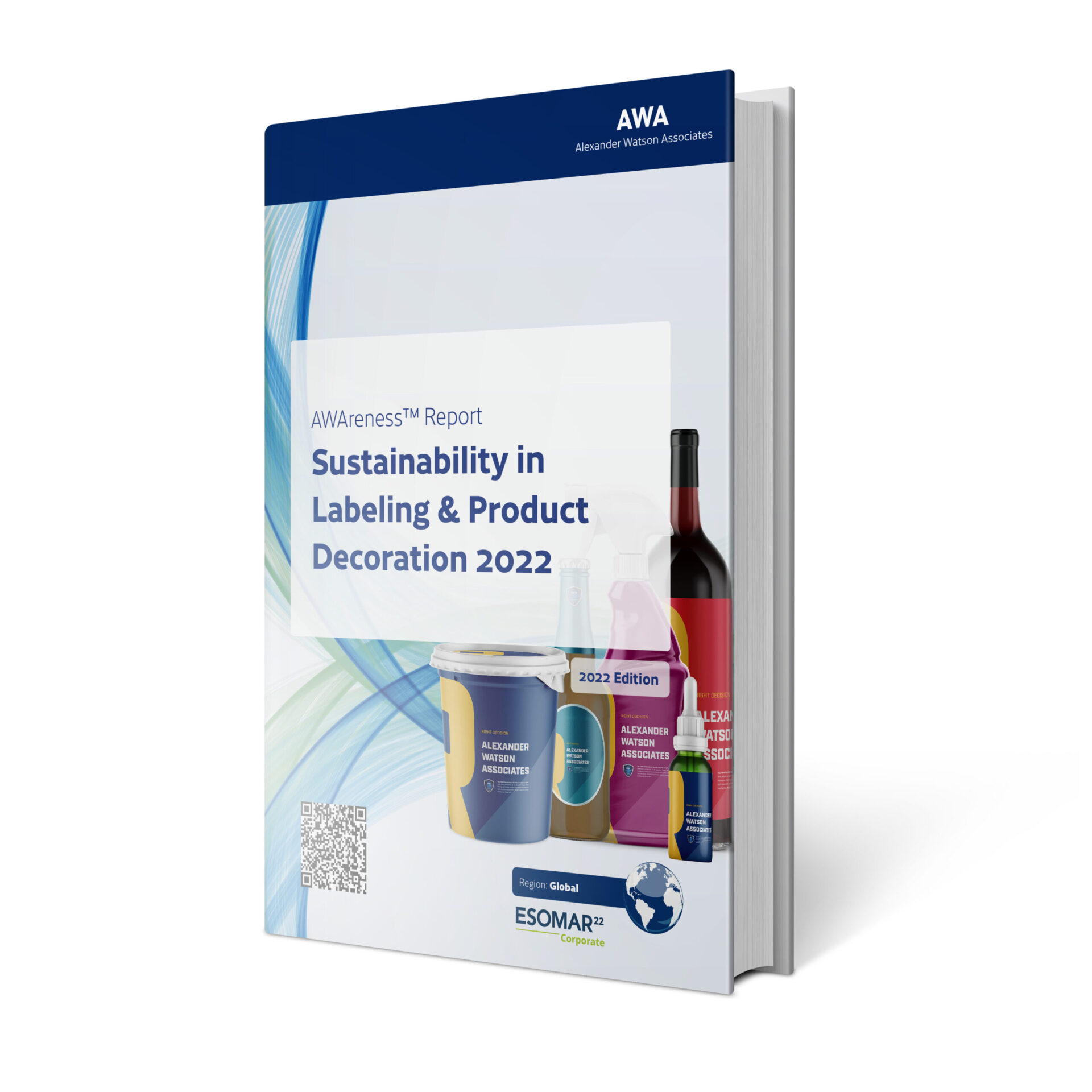AWAreness Report Sustainability in Labeling & Product Decoration 2022
What’s in it for you?
AWAreness™ Report Sustainability in Labeling & Product Decoration 2022 delves into the current environment surrounding sustainable development within the labeling industry, providing a comprehensive overview. It includes a detailed discussion on waste by-products and their impact on the environment, specifically analyzing the implications of each technology used. Readers will gain valuable insights into the breakdown of substrates across various labeling technologies, along with recent legislative and industry developments shaping the landscape.
The report further elucidates the implications of labeling technologies on sustainability, addressing key environmental concerns and disposal outlooks associated with each technology. It offers an insightful overview and analysis of common packaging and labeling combinations within different end-use segments, providing a holistic perspective on the industry’s sustainability efforts.
Table Of Contents
1. Introduction
1.1. Introduction
1.1.1. AWA Alexander Watson Associates
1.1.2. Sustainability Practice
1.1.3. AWAreness™ Report Sustainability in Labeling & Product Decoration 2022
1.2. Methodology
1.3. Definitions & Abbreviations
2. Executive Summary
2.1. Label Technologies
2.2. Overview
2.2.1. Pressure-sensitive Labels
2.2.1.1. Label Technology Positioning & Sustainable Development
2.2.1.2. Waste Generation & Recyclability
2.2.2. Glue-applied Labels
2.2.2.1. Label Technology Positioning & Sustainable Development
2.2.2.2. Waste Generation & Recyclability
2.2.3. Sleeve Labels
2.2.3.1. Label Technology Positioning & Sustainable Development
2.2.3.2. Waste Generation & Recyclability
2.2.4. In-Mold Labels
2.2.4.1. Label Technology Positioning & Sustainable Development
2.2.4.2. Waste Generation & Recyclability
3. Label Technologies
3.1. Pressure-sensitive Labels
3.1.1. Basic Overview
3.1.1.1. Market Environment
3.1.1.2. Variants and End Uses
3.1.2. Label Technology Positioning & Sustainable Development
3.1.2.1. Waste Generation
3.1.2.2. Release Liner
3.1.2.3. Facestock Substrates
3.1.2.4. Adhesives
3.1.3. Recyclability
3.2. Glue-applied Labels
3.2.1. Basic Overview
3.2.1.1. Market Environment
3.2.1.2. Variants and End Uses
3.2.2. Label Technology Positioning & Sustainable Development
3.2.2.1. Waste Generation
3.2.2.2. Facestock Substrates
3.2.2.3. Adhesives
3.2.3. Recyclability
3.3. Sleeve Labels
3.3.1. Basic Overview
3.3.1.1. Market Environment
3.3.1.2. Variants and End Uses
3.3.2. Label Technology Positioning & Sustainable Development
3.3.2.1. Waste Generation
3.3.2.2. Facestock Substrates
3.3.2.3. Adhesives
3.3.3. Recyclability
3.4. In-mold Labels
3.4.1. Basic Overview
3.4.1.1. Market Environment
3.4.1.2. Variants and End Uses
3.4.2. Label Technology Positioning & Sustainable Development
3.4.2.1. Waste Generation
3.4.2.2. Facestock Composition
3.4.2.3. Container Composition
3.4.3. Recyclability
4. Container Types
4.1. Rigid Packaging
4.1.1. Overview of Packaging Types
4.1.2. Types of Labels used in Rigid Packaging
4.2. Flexible Packaging
4.2.1. Overview of Packaging Types
4.2.2. Types of Labels used in Flexible Packaging
5. Macro Trends
5.1. Policy & Regulation
5.1.1. Circular Economy & Net-Zero
5.1.2. Forwardmost Policy (EU) as an Indicator
5.1.3. Regional Differences
5.2. Design for Recycling
5.2.1. Smart Packaging
5.3. Consumer Trends
5.3.1. Sustainable Preferences
5.3.2. Price Sensitivity
5.3.3. Point of Sale
5.4. Packaging Megatrends
5.4.1. E-commerce & Digitization/IoT
5.4.2. Biodegradable / Bio-Based Packaging
5.4.3. Sustainability
5.5. Brand Initiatives
5.6. Projects & Associations Overview
6. AWA Publications
AWA Contact Details

